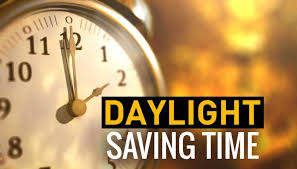
Daylight saving time in the US started as an energy conservation trick during World War I, and became a national standard in the 1960s. But many now feel it has outlived its usefulness. For one, the presumed electricity savings of taking advantage of more daylight in the evening turn out to be unclear or nonexistent.
One hour of lost sleep sounds like a small change, but we humans are fragile, sensitive animals. Small disruptions in our sleep have been shown to alter basic indicators of our health and dull our mental edge. Researchers have also found evidence of serious public health consequences when hundreds of millions of Americans are robbed of sleep every year.
There’s some evidence that finds “springing forward” increases the number of traffic accidents
In 1999, researchers at Johns Hopkins University and Stanford wanted to find out what happens on the road when millions of drivers have their sleep disrupted.
Analyzing 21 years of fatal car crash data from the US National Highway Transportation Safety Administration, they found a very small, but significant, increase of road deaths on the Monday after the clock shift in the spring. The number of deadly accidents jumped to an average of 83.5 on the “spring forward” Monday compared with an average of 78.2 on a typical Monday.
“We didn’t expect to see anything, actually,” Richard P. Allen, a Johns Hopkins neurologist who oversaw the study, told me in 2015. “To me it was really amazing that one hour made that difference.”
The paper did not find evidence of increased crashes on the Sunday daylight saving time begins, presumably because people can sleep in that day. But they say they think people are still sleep-deprived on Monday because they’re still adjusting to the shift in time — as they would for jet lag.
Allen’s findings joined a few smaller studies on the phenomenon. In 2006, researchers in Canada found the spring clock change “resulted in an average increase in traffic accidents [not deaths] of approximately 8 percent.” Here’s the chart they published in a letter to the New England Journal of Medicine:
:no_upscale()/cdn.vox-cdn.com/uploads/chorus_asset/file/6180181/Screen%20Shot%202016-03-11%20at%203.51.36%20PM.png)
It’s Allen’s view that his findings show there are many Americans who are on the margin of poor sleep. The daylight saving time change pushes them over the edge and creates a body-wide stress.
And it seems it’s not just car accidents. Since Allen’s study, evidence has mounted of an increase in incidences of workplace injuries and heart attacks in the days after we spring forward.
Should all driving on Monday be discouraged?
The take-home lesson here isn’t that driving on the Monday after the “spring forward” clock change is incredibly dangerous. A 2016 study in American Economic Journal: Applied Economics found that daylight saving time may cause around 30 road deaths a year, which is pretty tiny, all things considered. There are around 30,000 traffic deaths in the US each year.
The takeaway is that even small decreases in our sleep times can stress our bodies. And good sleep increasingly is seen as a subtle yet critical component of our health. Scientists now think poor sleep may play a role in the development of heart disease, diabetes, and obesity.
To prepare for a rough Monday after the clock change, it’s a good idea to get enough sleep in the days leading up to it. Allen stresses that a one-hour sleep disruption will be more severe for someone who is already sleep-deprived.
“A lot of these accidents occur because we don’t have residual sleep [reserves] to survive that insult,” he says. “When we’re running nearly empty on our sleep-wake status, it doesn’t take much to push it into a negative area.”
How to Survive the Hour Loss
You might be worried about “losing” that hour if you can’t sleep in, or wondering how the time shift will impact your restfulness during the night.
There are some simple ways to make sure your sleep routine isn’t disrupted. Check out these five tips for adjusting to daylight saving time, and rest easy:
Go to sleep and wake at the same time every day, and avoid spending more time in bed than needed.
Use bright light to help manage your “body clock.” Avoid bright light in the evening and expose yourself to sunlight in the morning.
Use your bedroom only for sleep to strengthen the association between your bed and sleep. It may help to remove work materials, computers and televisions from your bedroom.
Select a relaxing bedtime ritual, like a warm bath or listening to calming music.
Create a sleep environment that is quiet, dark and cool with a comfortable mattress and pillows.
Save your worries for the daytime. If concerns come to mind, write them in a “worry book” so you can address those issues the next day.
If you can’t sleep, go into another room and do something relaxing until you feel tired.
Exercise regularly … at any time of the day that feels right for you.
If you are experiencing excessive daytime sleepiness, snoring, or “stop breathing” episodes in your sleep, contact Alaska Sleep Clinic for a sleep apnea screening.








